The final day of our walk on the Milford Track took us through the Arthur Valley to Milford Sound. We woke to partially cloudy skies with just the odd passing light shower. After the driving rain of the previous day, and knowing that we would be making our way out to civilisation, it wasn’t too hard to get a nice early start to our walk. The trail took us through dense forest, and the relatively warm, damp climate ensured that almost every surface was covered in a different shade of green.

We came to the occasional break in the forest, some of which were the result of landslides caused by the heavy rains that fell in this area in February 2020. Over a sixty hour period over 1,000mm of rain fell in the area causing lots of damage in the area including to the track.

After a while we came to the head of Lake Ada, in a clearing beside the lake was the historic Boatshed Hut. The original hut was built in 1889 and served as a base for the prisoners that worked on the track, later it was replaced with the current hut that was used as a base to ferry supplies and walkers up to the private lodges along the track.
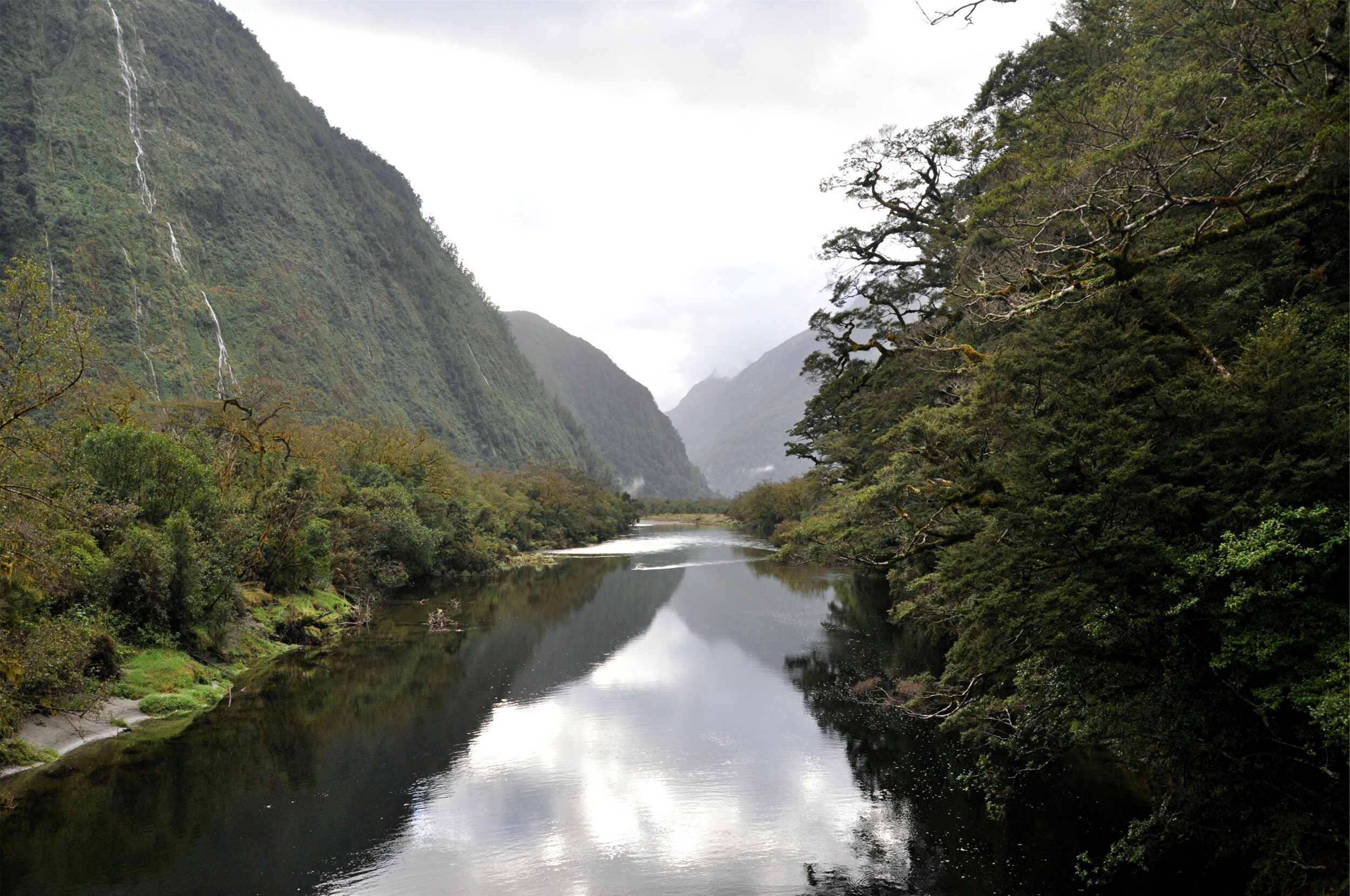
As the clouds continued to lift and the valley started to open up we could begin to appreciate the volume of water that passes through the area. The track passed by numerous large waterfalls and rivers, but higher on the hillsides water seemed to pour off of any available surface in great sheets.
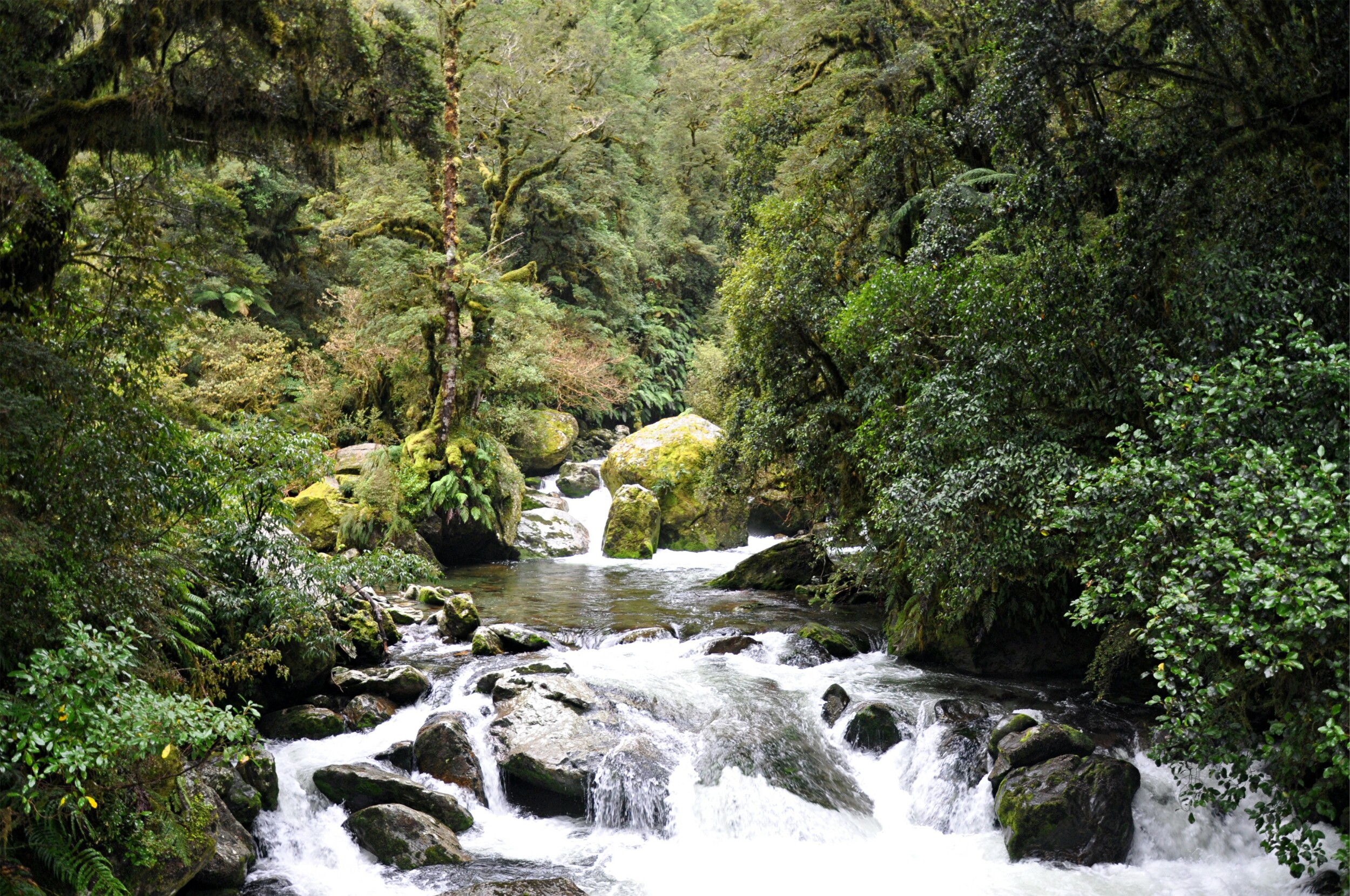
The track continued down through the lush valley, eventually reaching Mackay Falls, named after one of the original European explorers that scouted the route from the Milford end. Rumour has it that when Donald Sutherland and John Mackay came across these falls, Sutherland kindly allowed Mackay to name them, suggesting that he would name something further up the valley, should they see anything significant. As Sutherland’s luck would have it, the next waterfall they came across would later be recognised as the fifth highest waterfall in the world at 1904 feet / 580 metres! Although less dramatic, Mackay Falls (below) was still quite scenic.
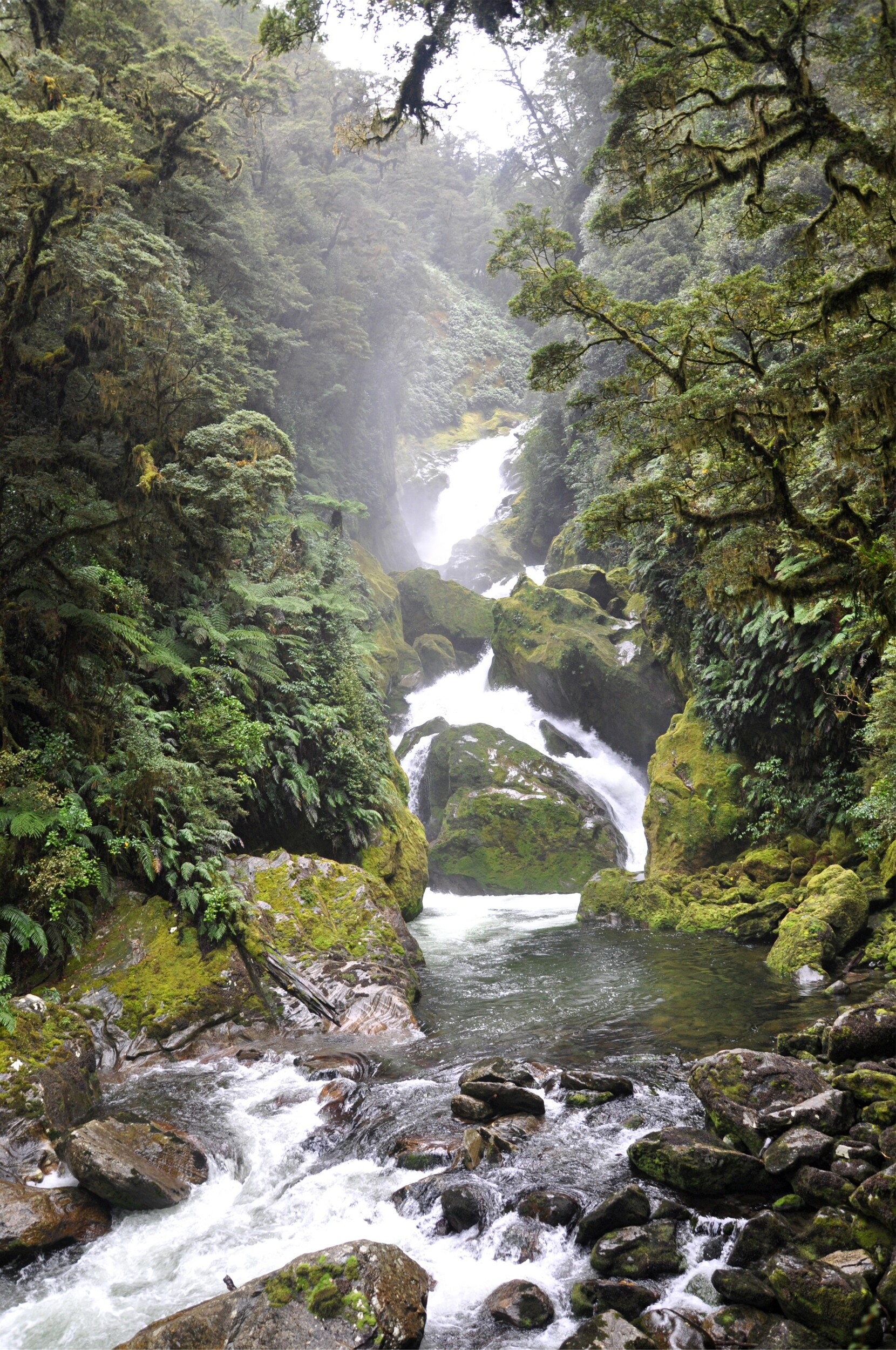
As we continued to skirt the edge of Lake Ada, we came to some of the original sections of the track that had been hand-cut into the granite rocks above the water. With big tramping packs on the slippery rocks it was a bit of a test of our nerves as we made our way along the relatively narrow ledge. It is hard to imagine what a challenge it would have been for the people that actually had to cut the trail.

Despite the steep drop down to the lake, we were able to take advantage of the lack of vegetation to enjoy the views across the valley. With the clouds continuing to lift, we were able to start to pick out the peaks that form the distinctive mountains around Milford Sound.

A little further down the track, we could hear the roar of the last of the significant waterfalls on the track. Although only about thirty metres high Giant Gate Falls is still quite a dramatic sight as it pours out of a jagged gash in the rocks.
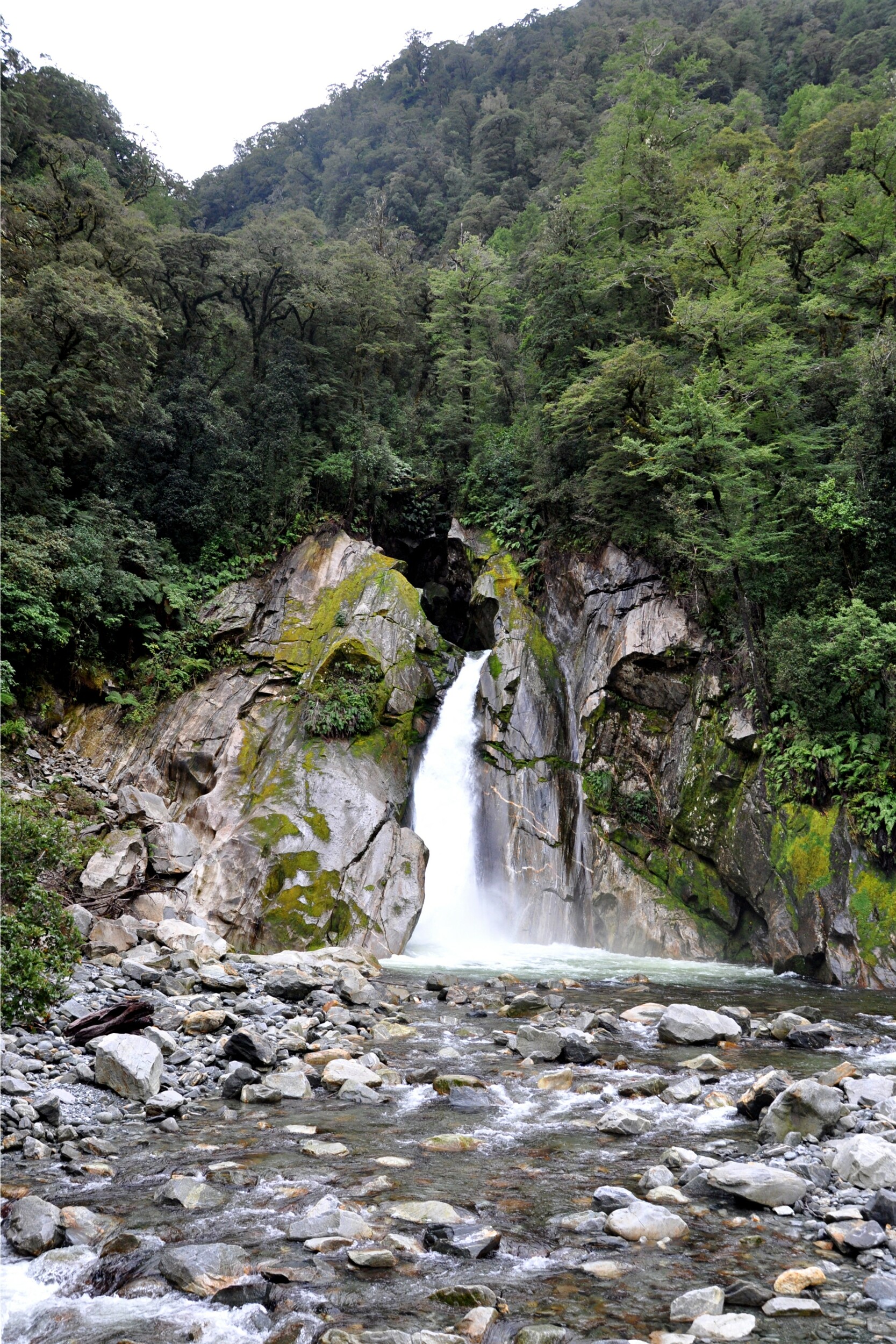
Crossing the river on a swing bridge just downstream from the falls we were happy to take in the view without getting our feet wet. Leaving the falls behind us, we reached the final section of track, an easy flat few kilometers of smooth track that was constructed by a prison labour gang between 1890 and 1892 and which despite all the rain and storms had remained in great shape.
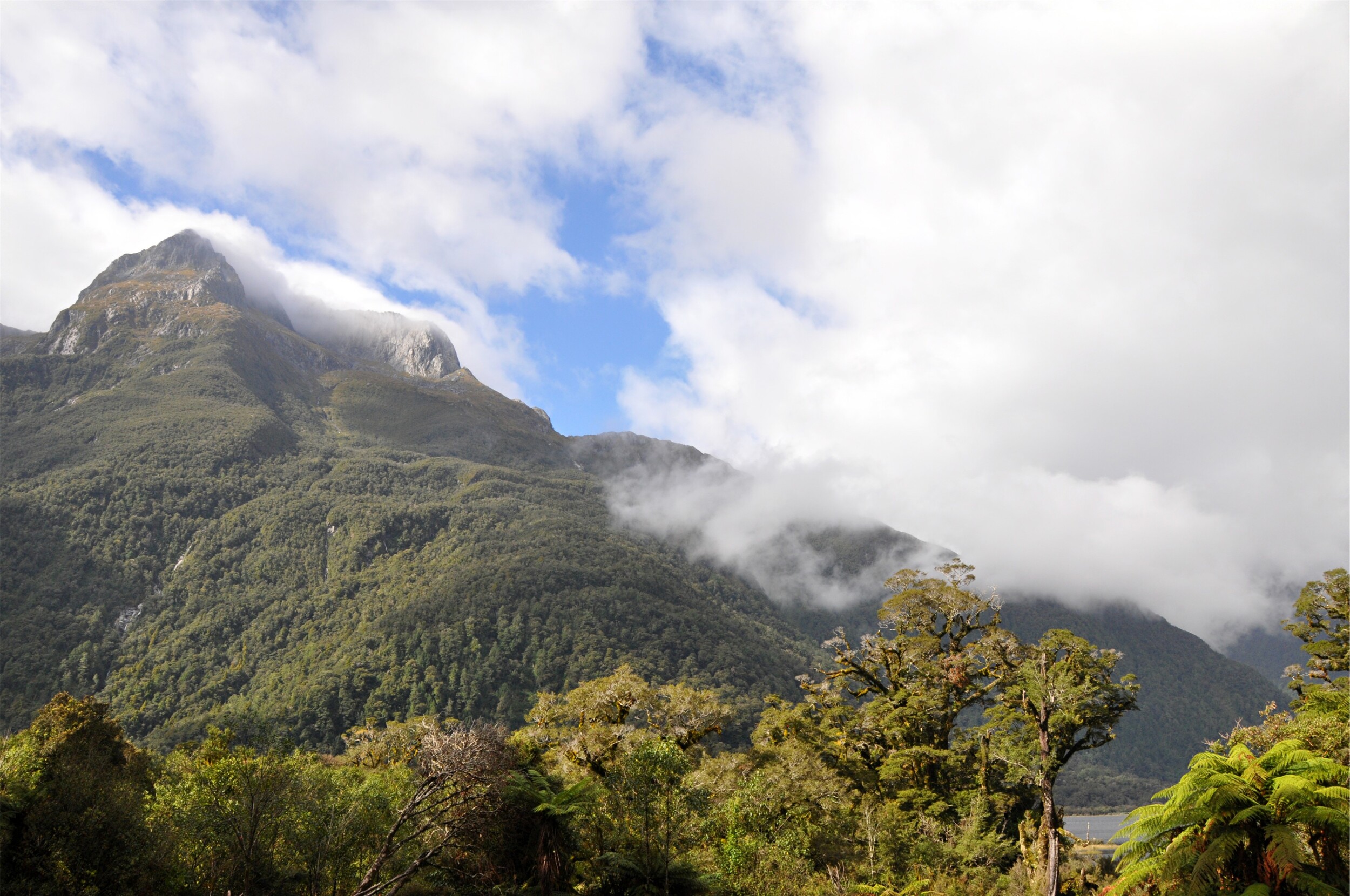
We arrived at the rather ominously named Sandfly Point, the official end of the Milford Track, well ahead of our scheduled boat to the main visitor centre in Milford Sound. We had just settled into the shelter to take refuge from the rain and sandflies when the boat captain arrived ready to take a first group of trampers across the lake. We happily climbed aboard the little shuttle boat for the quick trip, sadly the rain that had seemed like a light drizzle under the protective canopy of the forest had become a full-on downpour out on the water and with very limited visibility we took a very slow trip across the water. The advantage of the bad weather was that we had a much smoother ride than the bumpy trip across the lake at the start of the track.
